Hello Dear Reader,
Autumn is rolling in to the northern hemisphere, the days are shortening and many fruits are being preserved in kitchens for the winter months. Today I am bringing you three recipes – all made from one batch of foraged rose hips, the ripe fruit from any variety of Rose/Rosa. These are an incredible source of vitamin C and the government even encouraged people to gather them during the second world war, when other sources of vitamin C were scarce.
You could collect the rose hips from your garden if you grow roses, or get out and about in the countryside to find wild rose hips. Do remember to leave some for the birds though as they are an important winter food source for them!
Rose hip Jelly – recipe
500g Rose hips
2 apples
approx 500g sugar
1) Wash the rose hips and the apples. Chop the apples up into large chunks (there’s no need to core or peel them).
2) Place the rose hips and apples in a large pot and add enough water to just cover them. Bring to the boil, reduce heat, put on a lid and simmer until soft – this could take anywhere from 15-60 minutes depending on how ripe your rose hips are! Mash the pulp with a potato masher, then simmer for a further 15 minutes with the lid on.
3) Strain the mixture through muslin or use a jelly bag. This is important as rose hips contain fine hairs, which can be an irritant to the throat – indeed rose hips were squashed and used by practical jokers before itching powder was invented.
Measure the liquid and pour into a clean pan with the same measurement of sugar (e.g. if you have 500ml liquid, add 500g sugar). This will give quite a sweet jelly, so reduce the amount of sugar for your personal taste.
4) Bring slowly to the boil so the sugar melts. Then simmer until reaches setting point.
The setting point can be tested by putting a spoonful on a cold plate and drawing your finger through it to see if it is jelly/jam like. If still too liquid, continue simmering and testing every 5 minutes. If it is a little scummy on top when ready, remove from heat and add a knob of butter – the scum should magically disappear!
Pour into sterilised jars, leave to cool and then label.
This rose hip jelly is fantastic on toast, or to accompany roast meat, or added into your home baking.
Rose hip Syrup – recipe
1) Place the pulp left in the sieve from the straining stage of the rose hip jelly into a pan with enough water until is liquid again. Bring to boil, turn down heat, add lid and simmer for an hour.
2) Strain the mixture through muslin or use a jelly bag. Measure the amount of liquid and pour into a clean pan with the same measurement of sugar (e.g. if you have 500ml liquid, add 500g sugar). Bring slowly to the boil so the sugar melts and then simmer for 10 minutes. Pour into sterilised jars, leave to cool and then label.
I used this rose hip syrup all through last winter, taking a spoonful any time I felt that prickly feeling at the back of my throat suggesting the arrival of a winter cold or flu-like infection. I can’t guarantee it was the syrup that did it but I can tell you that I didn’t have a single cold last winter, something I am usually very susceptible to!
Rose hip Vinegar
1) Place the pulp left in the sieve from the straining stage of the rose hip syrup into a a large glass jar. Add 1 tbsp sugar, top up with water and place on a plate. Do not cover – the air needs to get in so that the sugars will gradually start a natural fermentation process. Stir the mixture daily to release any carbon dioxide which forms.
2) Once it has stopped fermenting, strain through a muslin or kitchen cloth.
3) Discard the pulp and pour the liquid into a sterilised bottle. Leave to mature for about six months.
Once your vinegar is ready, use it to replace white wine vinegar or cider vinegar in any recipes. I used my rose hip vinegar in a batch of my Sweet Pickled Peppers, making them much cheaper to make, and more delicious than usual!
Even Mr Vohn, who usually cringes at my fermenting experiments, proclaimed them the best batch ever!
Enjoy!
Vohn
x
P.S. In Sweden rose hips are often made into a soup! I have been lucky enough to have been made it by Scottish food guru Wendy Barrie, whose husband is Swedish. It is very unusual and I don’t think I could describe it – you’ll have to make it yourself! Wendy has a recipe for Nypon soppa on her website.
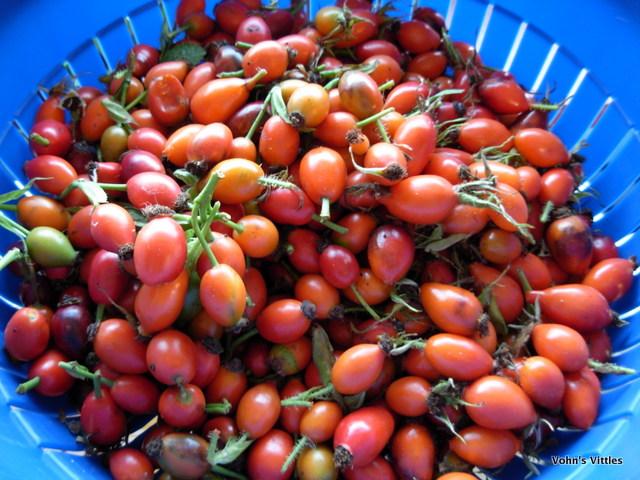


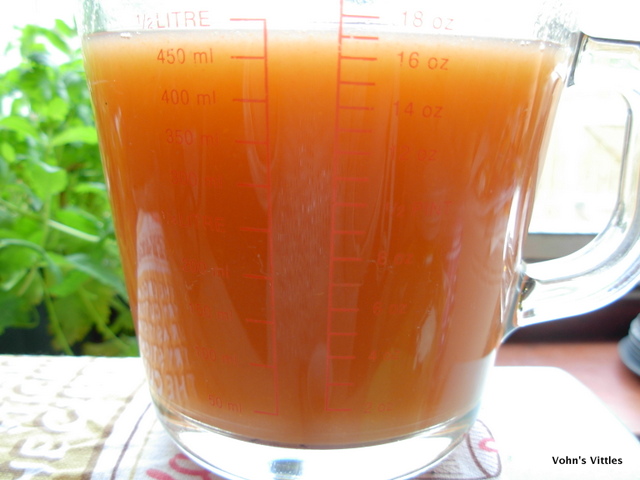



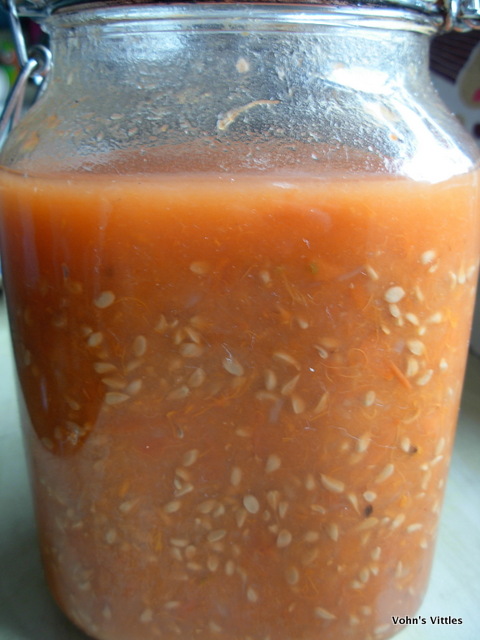
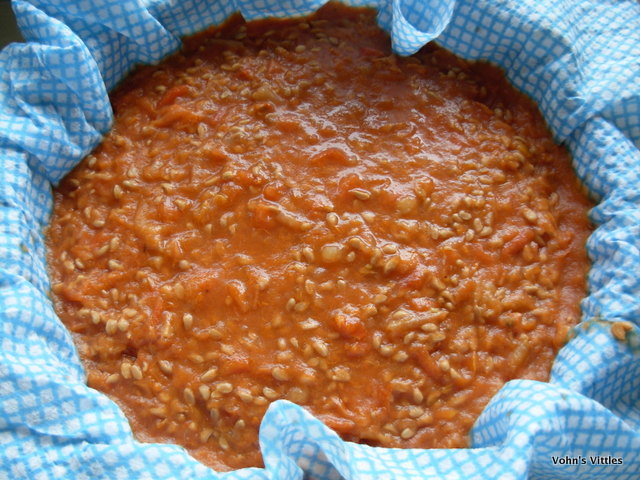
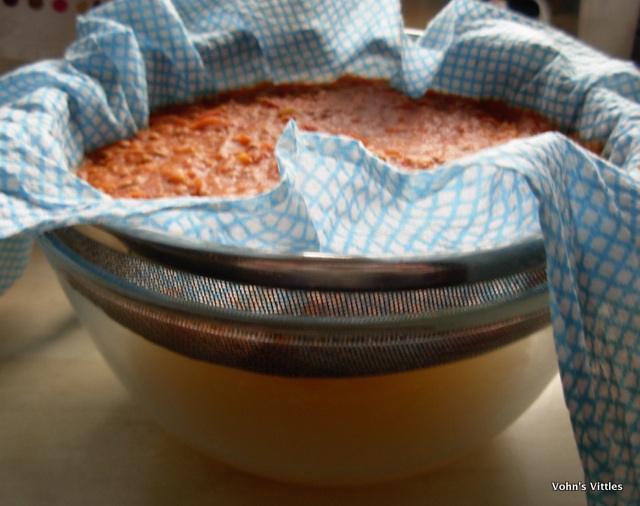
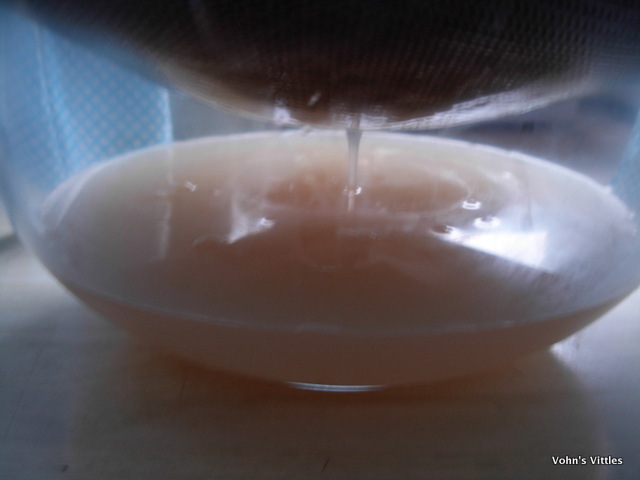
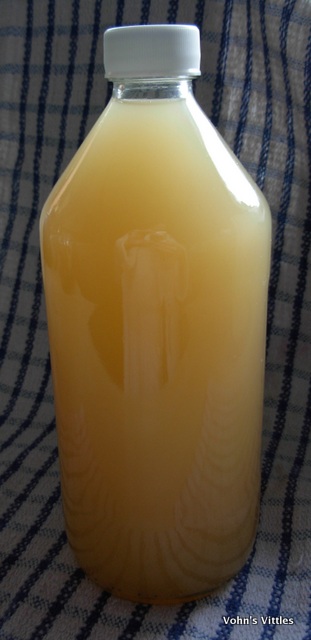
My rosehipr syrup has started to ferment in the bottles. Help please
Oh yum Jenny! Don’t despair!
Just make sure you release the fermenting gases so they don’t build up and smash the bottle! Once you’ve done that, you’ve got a little gem on your hands. Fermented rose hip syrup is a great base for a variety of drinks! Try it as the syrup in a cocktail, or added to a light beer or pale ale to make a fruit saison. Or if you don’t fancy alcohol, then try adding it to soda water for a refreshing fruity hit.
Well, I’ve raided the hedgerows and made bramble jelly. Used up my remaining sage, mint and rosemary in apple jellies.. and now it looks like I might just be looking for some rose hips! The colour of the jelly and syrup looks divine. This is possibly a stupid question, but when making the vinegar you say “stir daily” and “once it has stopped fermenting”.. how long do you mean? a few days? a week?
Fantastic Elaine! The blackberries are almost over here and I made my last batch of bramble jelly yesterday. I am still gathering rose hips for more syrup over the winter. The fermenting will be obvious once it starts – with large bubbles forming that you will release when you stir it daily. Once there are no more bubbles forming, then it means fermentation has stopped. The length of time depends on the ripeness of the rose hips (sugar content) and on how warm your kitchen is – mine fermented for about three weeks last year. Have fun experimenting! 😀
ive just made the rosehip syrup and its delicious I ll be picking more rosehips to make the jelly 🙂
I’m so very pleased Louise. It is wonderful to hear when people have used one of my recipes – you’ve made my day! Thanks so much for leaving a comment. 😀
Woo hoo, gonna try this one!
Through you’d like this one Annie! Thank you for luring me in to the magical world of fermenting! 🙂